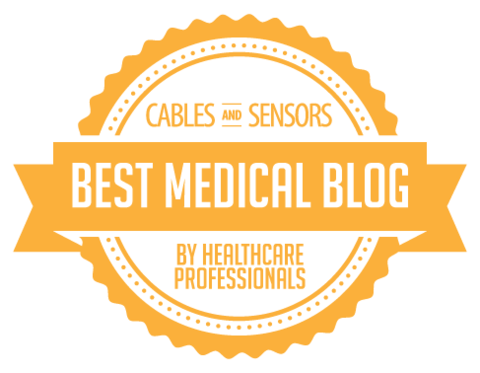How does cholesterol cause heart disease?
Here’s a question I was recently asked:
How does high cholesterol affect your cardiovascular system?
Let me see if I can explain and keep the process easy to understand!
First the endothelium (thin inner lining of your blood vessels) becomes damaged and inflamed. This damage can be caused by a variety of factors, such as high blood pressure, high stress level, poor diet, toxic chemicals and metals, tobacco smoke, etc.
So, your inflamed endothelium becomes susceptible to attracting fatty particles like cholesterol. The cholesterol particles work their way into the lining. These deposits of cholesterol can then be damaged by free radicals to form oxidized LDL cholesterol.
The immune system responds to the inflamed site by secreting a substance to make the endothelium sticky. The process leads to the formation of macrophages whose goal is to “seek and destroy” foreign objects. However, the oxidized LDL is toxic to macrophages, causing macrophages to be immobilized and unable to return to the blood stream.
The process continues to draw white cells to the area where they too are immobilized by oxidized LDL leading to the formation of a “fatty streak” on the artery wall.
A number of steps now take place involving C-reactive protein, fibrinogen, white blood cells, elastin, and collagen that eventually form a tough, fibrous cap over the fatty steak. Under the fibrous cap, dead cells accumulate, decay, and produce pus. You now have the development of a dangerous plaque within your artery walls. Plaque can continue to grow and instigate the development of additional plaque within the arteries leading to the narrowing of your blood vessels, reduced blood flow, heart attacks, etc.
FYI – Cholesterol does not necessarily need to be elevated for the above steps to take place. It’s becoming more clear that knowing your LDL and HDL particle size gives you a better overview of your heart health than typical cholesterol levels. Particle size can be determined with lab work, such as a Lipoprotein Particle Profile.
All the best,
Lisa Nelson RD
Heart Healthy Tips
Heart Healthy Tips – 3 Key Minerals to Lower Blood Pressure
1. Reduce your SODIUM intake.
Too much sodium in your diet can contribute to high blood pressure and make your blood pressure treatment less effective. Simply reducing your sodium intake to 2.3 grams (6 g table salt) daily can decrease your blood pressure.
The average American consumes 6-18 grams of table salt daily (about 3 teaspoons). The body only needs 200 mg daily. That is 30 times less than what American’s typically consume.
To be heart healthy, sodium intake should be reduced to less than 2300 mg (1 teaspoon) daily.
Quick tips to cut back on sodium:
- Don’t add salt when boiling water.
- Leave the salt shaker off the table.
- Read food labels to avoid foods high in sodium.
- Avoid foods high in sodium, such as gravies, cheese, and soy sauces.
2. Increase your POTASSIUM intake.
Potassium works to balance out the sodium in your diet. An adequate potassium intake can lower systolic pressure ~4.4 mm Hg and diastolic pressure ~2.5 mm Hg.
Good potassium sources:
Cantaloupe, bananas, dates, nuts, oranges, and green leafy vegetables
Maintaining an adequate intake of potassium is especially important if you are taking diuretics. Some diuretics increase potassium loss via the kidneys.
3. Add more MAGNESIUM to your diet.
Research has shown an inverse relationship between magnesium and blood pressure. In other words, individuals with a high magnesium intake, typically have a low blood pressure.
Good sources of magnesium include:
Peas, beans, whole grains, nuts, seeds, lima beans, squash, broccoli, spinach, and seafood
Supplemental magnesium of ~500 mg can effectively lower blood pressure. Some studies have found magnesium supplements to reduce systolic blood pressure 2.7 mm Hg and diastolic 3.4 mm Hg. Discuss all supplements with your MD!
All the best,
Lisa Nelson RD
Heart Healthy Tips
Lipoprotein a – How to Lower Lipoprotein a
Lipoprotein(a) levels are not affected by the foods you eat or your activity level. There are no prescription medications, including statin drugs, that have an impact on reducing levels. That doesn’t mean you don’t have options if you live with an elevated lipoprotein(a). Using supplements, such as omega 3’s, niacin, and vitamin C are three options for reducing lipoprotein(a).
Work with your doctor to learn your lipoprotein(a) and the best treatment approach for you.
Testing lipoprotein a
Function of lipoprotein a
Dangers of elevated lipoprotain a
All the best,
Lisa Nelson RD
How to Lower Cholesterol in 8 Simple Steps
Lipoprotein a – What are the dangers of an elevated lipoprotein a?
Elevated lipoprotein a can cause problems. If your vessel walls are damaged, the body produces more lipoprotein(a) to repair vessel walls. Too much lipoprotein(a) concentrates at damage locations along your artery walls, binds with two amino acids resulting in LDL cholesterol being dumped at the “site” and oxidized LDL is deposited in the artery wall which escalates the build-up of plaque. As the plaque forms, lipoprotein(a) encourages the formation of a blood clot on top of the plaque. All of this acts to narrow the blood vessel and impedes blood flow.
One reason for elevated lipoprotein(a) levels is atherosclerosis (hardening of the arteries) and constant arterial wall damage causing the body to produce excess lipoprotein(a) in an attempt to repair the damage. Another reason for high lipoprotein(a) levels is genetics. Even if you do not have signs of heart disease, meaning your blood pressure and cholesterol levels are normal, you may still have elevated lipoprotein(a) due to genetics.
Which is why if you have heart disease (high cholesterol, high blood pressure, etc.) or your have a strong family history of heart disease, it’s in your best interest to get a comprehensive lipid panel. What you don’t know just might hurt you!
As an FYI, for those of you with recurrent angina, bypass grafts closing, or arteries re-narrowing after angioplasty, elevated lipoprotein(a) levels are a possible culprit.
Function of lipoprotein a.
How to lower lipoprotein a.
All the best,
Lisa Nelson RD
How to Lower Cholesterol in 8 Simple Steps
Heart Healthy Tips – 3 Ways to Promote Heart Health Immediately
Heart healthy tips can be quite simple!
1. Use olive oil to prepare your meals.
Olive oil contains monounsaturated fat, which helps reduce LDL cholesterol. To receive the highest level of antioxidant benefits, select “extra-virgin” and “virgin” olive oils, the least processed forms. When you see the term “light” on olive oil labels, it indicates a reduced olive flavor.
Simple ways to use more olive oil:
- Sauté your vegetables in olive oil.
- Replace some of the fat in baked goods with olive oil.
- Use an olive oil based salad dressing.
- Flavor bread by dipping in olive oil.
2. If you drink alcohol, choose red wine. . .in moderation.
Studies show a link between red wine and decreased risk of heart disease. Red wine may reduce blood clotting in a way similar to the effects of aspirin. Red wine also contains antioxidants. A diet high in antioxidants leads to a decreased oxidation of LDL cholesterol and less plaque formation in your arteries.
If you already drink wine, continuing to do so in moderation (less than 4 ounces of wine per day) may be beneficial. If you do not currently consume wine, I do not recommend you start. Too much wine will counteract your good intentions and lead to additional complications, such as increased blood pressure.
3. Avoid Trans Fatty Acids
Trans fats raise LDL (bad) cholesterol levels and lower HDL (good) cholesterol. Consuming trans fats increases your heart disease risk. Daily trans fat intake should be less than 1% of your total calorie intake.
Sources – chips, cookies, crackers, vegetable shortening, commercial baked goods, French fries, fried chicken, doughnuts, pastries, pie crusts, biscuits, pizza dough, and stick margarines.
Look at the Nutrition Fact Panel on products. If you see the words “partially hydrogenated vegetable oils” in the ingredient list, then the product contains trans fats. As of January 2006, companies are required to list trans fat content on the nutrition fact panel.
All the best,
Lisa Nelson RD
Heart Health Tips
Lipoprotein a – What is the function of lipoprotein a?
Lipoprotein(a) is formed when one LDL molecule is attached to a protein called apolipoprotein(a). (FYI: Lipo = fat; hence the name lipoprotein – fat with protein.) A healthy level of lipoprotein(a) is beneficial and will:
Repair damaged cells
Restore structure of blood vessel walls
Enhance blood clotting
Prevent excessive blood loss due to damaged vessels
Promote cell regeneration
Basically, lipoprotein(a) at healthy levels acts as an “artery patch”.
Dangers of elevated lipoprotein a levels.
All the best,
Lisa Nelson RD
How to Lower Cholesterol in 8 Simple Steps



